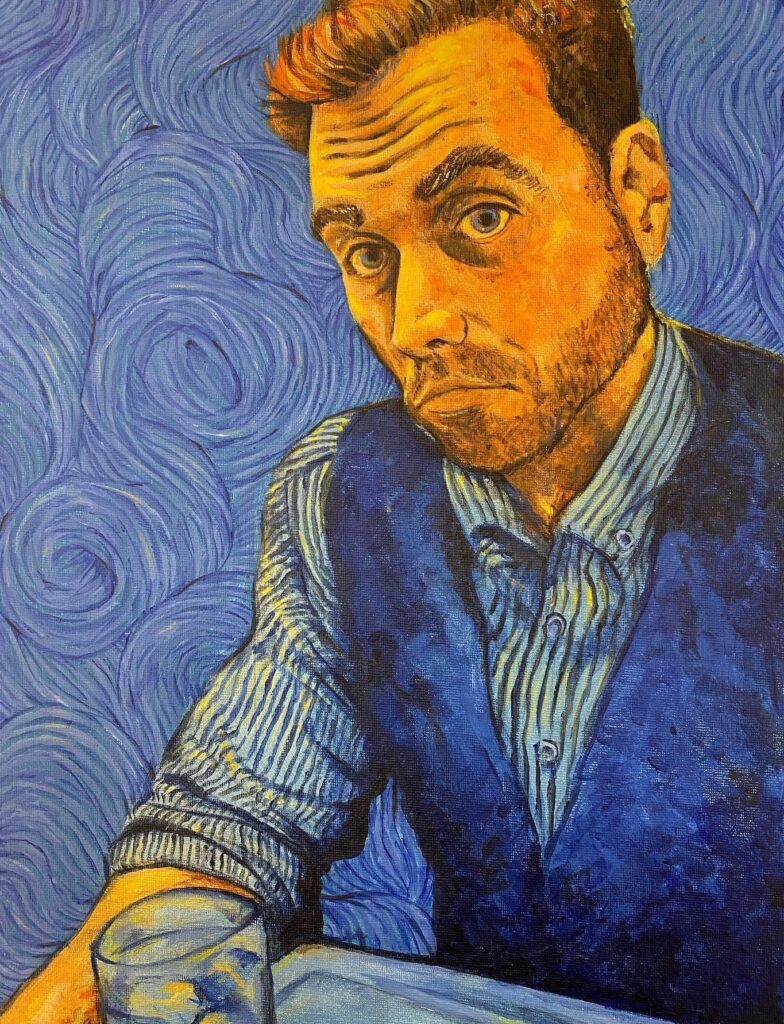What is your process for making 2D art?
Every new project starts with an intention-driven plan. What am I doing and what is its intention or purpose? Now, if I’m just freeform doodling, improvising for personal pleasure and exploration, making ‘art’ in the truest sense, I still need to start with at least a scale and medium so I can get started, maybe a time frame, and its purpose/intention will reveal itself as I go along, but if it’s an ask from someone I like to have a plan and details because I hate making corrections once I’ve got something going. I’m at a point where I don’t need to formally lay out my plan, depending on its complexity I can usually just organize it in my head, but in most cases, it starts with a piece’s intention (is it a logo? tattoo? comic book? How will it be printed or published? What is the scale? Who is the audience? Is there a look or theme?) I then spend time compiling references or just start drawing/thumbnailing. From thumbnails I go to a rough pass, then a refined pass, then a clean final pass. If it’s a commission I ask for feedback at the thumbnail stage. Most work I do now is done digitally, a Wacom Cintiq and usually Photoshop for 2D work and Blender for 3D, Maya for 3D animation and Harmony for 2D animation, but I quietly long to do large-scale paintings, drawings, and sculptures, or just dedicate myself to doing a short animated film for weeks/months on end.
How/Why did you come up with penguins for the Ice Storm images?
I’m not interested if a project isn’t narrative, performance, or character-driven. I’m capable of doing other kinds of work, 15 years of making ends meet as a freelance artist will help you get over the need to feel inspired and just roll up your sleeves and apply your skills, but if it doesn’t involve a character or a story its just work for me. So, when I was asked to design something cool to be printed on sweatshirts for the race without any constraints or suggestions, I mean, come on, it’s a drone race in an ice rink. It’s ripe for drama. If I’m allowed to do whatever I want, I almost instinctively turn it into a story, an animated film in my mind. The first thing that popped into my head was a pack of jet-propelled robotic wolves racing across a frozen wasteland through a literal ice storm. I sketched this and it was immediately shot down, deemed as too weird and terrifying for children. Fine, so you ask yourself, what’s a child-friendly icy critter to use in its place? I was born and raised in Pittsburgh, so of course I thought of the Pittsburgh Penguins logo. While I was sketching I was suddenly reminded of Tim Burton’s Batman Returns and remembered it had penguins with rockets strapped to their backs. So, how about a penguin with a jet engine strapped to his back? Add a pair of aviator goggles, and there you have it.
What inspires you when you create art and how do you find it?
Inspiration is when you have a couple of dozen completely disparate data points in your mind that have no seeming relationship to one another, and then you suddenly see the missing piece and it all clicks together into a cohesive system that would never have worked otherwise. For myself, these most instinctively manifest as visual stories and characters. I’m drawn to things with sharp teeth and broken hearts; laughing monsters. I’m drawn most to that space that sits somewhere between something being horrifically tragic and gut-busting funny. I get inspired most by films, books, art, and on the rare occasion, other people. It gets tricky with people. Most creative people lack skills, so their ideas are just more work for you. Most people with skills aren’t very creative, and all they say is the idea can’t be done. We need more creative people with skills.





